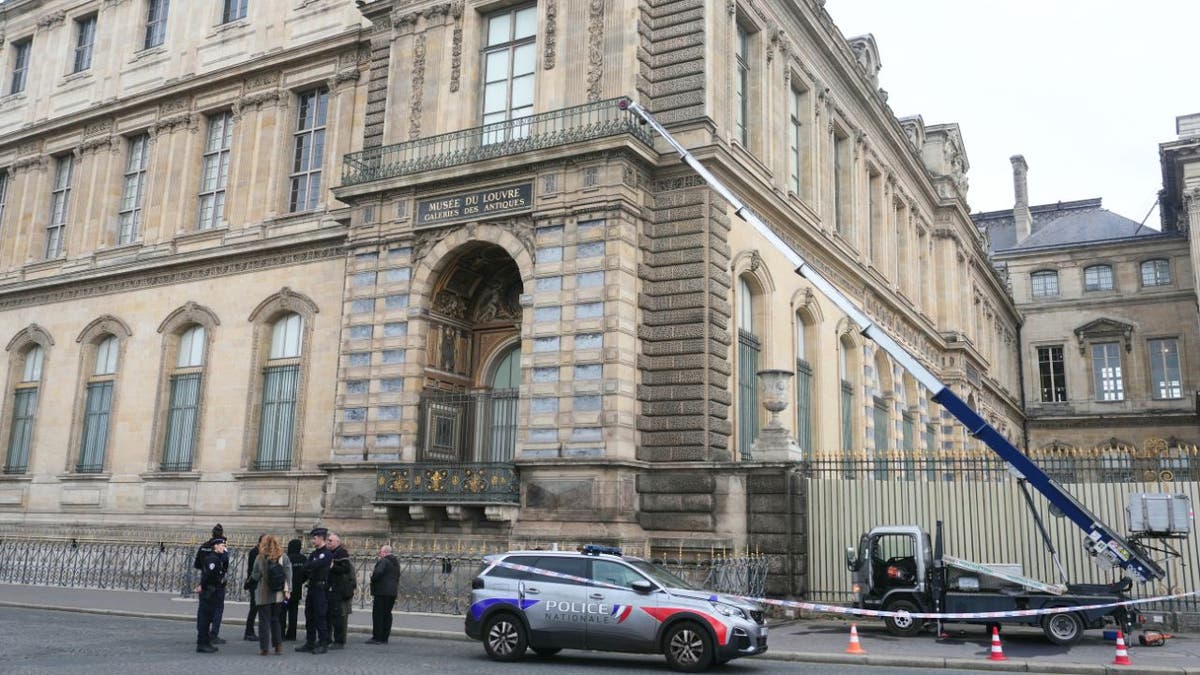Articles in this Cluster
03-11-2025
The Paris prosecutor, Laure Beccuau, has stated that the recent Louvre jewellery heist was carried out by petty criminals rather than organized crime professionals. Four individuals, three men and a woman, have been arrested and charged in connection with the theft, which took place on October 19. The suspects are believed to be from the impoverished Seine-Saint-Denis area just north of Paris. The stolen jewels, worth €88m, included a tiara worn by Empress Eugenie and the Marie-Louise necklace. Investigators believe four men were involved in the heist, with one still on the run. The prosecutor expressed hope that the stolen jewels can be retrieved intact, despite fears they may have been spirited abroad. The incident has led to tightened security measures around France's cultural institutions, with the Louvre transferring some of its most precious jewels to the Bank of France.
Entities: Louvre, Laure Beccuau, Seine-Saint-Denis, Paris, France • Tone: neutral • Sentiment: negative • Intent: inform
03-11-2025
Two more suspects have been charged in connection with the theft of jewels valued at $102 million from the Louvre Museum in Paris last month, bringing the total number of suspects charged to four. The suspects, a 38-year-old woman and a 37-year-old man, were arrested and charged with complicity in organized theft and criminal conspiracy. They denied any involvement and will remain in custody as the investigation continues. The theft occurred on October 19 when a four-person team broke into the Louvre's Apollo Gallery in broad daylight, stealing jewels in under eight minutes. The investigation has identified DNA evidence linking some suspects to the crime scene and escape vehicles.
Entities: Louvre Museum, Paris, Apollo Gallery, La Courneuve, Charles de Gaulle Airport • Tone: neutral • Sentiment: negative • Intent: inform
03-11-2025
The article is the third installment in a series about human traffickers, focusing on Karzan G., an Iraqi-Kurdish migrant smuggler who was killed in a shootout with French police on an autoroute near Dijon on February 8, 2025. Karzan G. was part of a network that smuggled migrants into the UK via lorries on autoroutes. The police had been tracking him and his associates for months, and a confrontation ensued when they attempted to apprehend him. The article provides details about Karzan G.'s background, his network's operations, and the events leading up to the fatal shootout.
Entities: Karzan G., Dijon, France, Irak, Kurdes • Tone: neutral • Sentiment: negative • Intent: inform
03-11-2025
The article is the third installment in a series investigating migrant smugglers. It details a shootout between French RAID police and suspected smugglers at a highway rest stop near Dijon, France, resulting in one smuggler's death and a police officer's injury. The smuggler, Karzan G., was part of a Kurdish Iraqi family involved in migrant trafficking. The investigation revealed a sophisticated network operating along France's motorways, particularly on the A5 and A26, loading migrants into trucks headed for the UK. The article highlights the lucrative nature of migrant trafficking and the violence associated with it.
Entities: Karzan G., France, Dijon, RAID, Kurdish Iraqi • Tone: neutral • Sentiment: negative • Intent: inform
03-11-2025
Two suspects in the Louvre jewellery heist were convicted of involvement in the same theft case a decade ago, French prosecutors have revealed. The thieves stole nine items worth an estimated £76m in less than eight minutes while the world-famous museum was open to visitors on 19 October. Paris prosecutor Laure Beccuau said three alleged members of the four-strong 'commando' team who carried out the raid are now in custody. The prosecutors believe the raid was carried out by small-time criminals from the northern suburbs of Paris rather than professional gangsters. The investigation is ongoing, with at least one suspect still at large and the stolen jewels yet to be recovered.
Entities: Louvre, Paris, Laure Beccuau, Louvre jewellery heist, France • Tone: neutral • Sentiment: negative • Intent: inform
03-11-2025
The Louvre Museum in Paris was the site of a daring heist in which thieves stole eight historic crown jewels worth $100 million. The police were able to track down three suspects within a week, thanks in large part to DNA evidence left at the scene. The DNA was matched to profiles in France's National Automated Genetic Fingerprint File, a database that contains over 4.4 million DNA profiles collected from people suspected or convicted of crimes. The database has been instrumental in solving crimes in France, including cold cases, and has been used in conjunction with other European DNA databases. The use of DNA databases has raised questions about privacy and the potential for misuse, but it has also been hailed as a powerful tool in the fight against crime.
Entities: Louvre Museum, Paris, France, Laure Beccuau, National Automated Genetic Fingerprint File • Tone: neutral • Sentiment: neutral • Intent: inform
